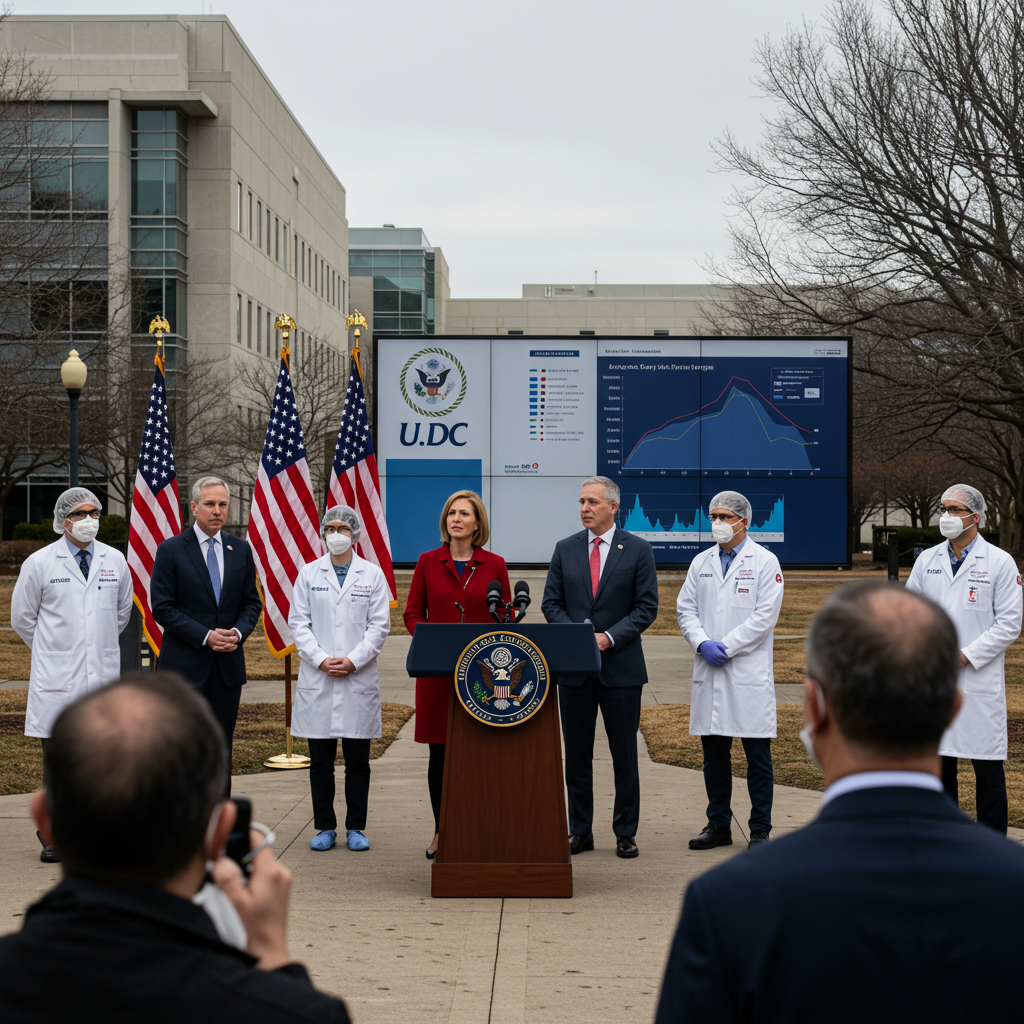The U.S. Centers for Disease Control and Prevention (CDC) has officially concluded its focused emergency response dedicated to the highly pathogenic avian influenza A(H5N1) virus, commonly known as bird flu. This significant shift, effective July 2, 2025, marks a transition away from crisis mode after a period of elevated activity that began in April 2024. The agency cites a substantial decrease in reported animal infections and the notable absence of new human cases in the United States since February 2025 as the primary drivers for this decision.
Millions of birds, both wild populations and those in commercial farming operations, have been impacted by the recent wave of H5N1. The virus has also demonstrated the capacity to infect various mammal species, including dairy cattle across numerous U.S. states. While the emergency stance is ending, federal health authorities emphasize that monitoring and preparedness efforts for influenza, including H5N1, will persist under standard agency programs.
Transitioning from Emergency to Routine Surveillance
The deactivation of the H5N1 emergency response on July 2, 2025, signifies a strategic recalibration by the CDC. Instead of operating under an emergency framework that allowed for additional resource allocation and rapid deployment, the agency will now fold H5N1 monitoring and response activities back into its established influenza division and relevant public health programs. This means ongoing surveillance will continue, but the specific emergency operations center focused solely on this outbreak has been disbanded.
A spokesperson for the U.S. Department of Health and Human Services (HHS) confirmed this pivot, explaining that the reduced threat level, characterized by declining animal infections and no human cases for several months, allows for this move. This transition back to regular program activity does not mean a complete halt to vigilance. Readiness plans and response protocols for influenza, including the potential resurgence of H5N1, remain in place.
Expert Perspectives on the Decision
The decision to end the emergency response appears to have broad support from within the public health community. Dr. Nirav Shah, who recently served as a principal deputy director at the CDC, voiced his agreement with the move. According to Dr. Shah, currently a visiting professor at Colby College in Maine, this decision originated with the agency’s career scientists, not as a directive imposed from above.
He explained the rationale is straightforward: the absence of recent human H5N1 cases diminishes the need for the intense, around-the-clock effort required during an emergency. Dr. Shah highlighted the flexibility of the public health system, stating that ramping the response back up to emergency levels could be done very quickly, potentially within a single afternoon, should the situation change and human cases re-emerge. This underscores confidence in the ability to react swiftly if the virus dynamics shift unfavorably.
Understanding the H5N1 Outbreak Context
The H5N1 avian influenza virus is not new; it was first identified in the late 1990s and has caused sporadic outbreaks globally over the years. However, the most recent phase, gaining prominence around 2022, proved particularly impactful, affecting a vast number of birds. In the United States alone since 2022, nearly 175 million birds across wild, commercial, and backyard populations have been affected by H5N1.
Beyond birds, the virus has shown increasing capacity to infect mammals. It has spread to dozens of species in over 100 countries. A significant development occurred in early 2024 when H5N1 began circulating among dairy cattle in the United States. This spread presented a new challenge, affecting over 1,000 herds across 17 states in approximately 14 months. While primarily impacting animals, the potential for spillover into humans remains a key concern for public health officials.
Human Cases and Current Risk Assessment
Despite the extensive spread in animal populations, documented human cases of H5N1 bird flu in the United States have remained relatively low compared to the scale of the animal outbreak. A total of 70 human cases have been reported nationally since the current wave began, sadly resulting in one fatality.
The CDC emergency response specific to H5N1 was initially declared on April 4, 2024. This declaration provided additional support mechanisms, such as surge staffing, to enhance the public health response during a period of heightened concern, particularly following the detection in dairy cattle. The deactivation signifies that, based on current data, this elevated level of emergency support is no longer deemed necessary.
The official stance from the CDC and HHS remains that the current public health risk from H5N1 bird flu is low. They affirm there is currently no known person-to-person spread of the virus in the U.S., which would significantly increase the risk profile. However, this assessment is contingent on ongoing monitoring, and the agencies are prepared to scale up activities if the situation changes.
Changes in Data Reporting and Future Outlook
With the shift back to routine operations, the way information about H5N1 is reported is also changing. As of July 7, 2025, CDC updates regarding bird flu will be integrated into the agency’s general influenza reports, rather than being released as separate, frequent H5N1-specific bulletins.
Furthermore, data on the number of individuals being monitored and tested for potential bird flu infection will now be provided on a monthly basis, a decrease in frequency compared to the reporting during the emergency phase. Information concerning highly pathogenic avian influenza (HPAI) in animals, particularly updates related to infected cattle herds, will transition from the CDC website to the U.S. Department of Agriculture (USDA) website. These changes reflect the return to standard inter-agency information sharing protocols for animal health issues with potential public health implications.
Navigating Seasonal Patterns and Expert Concerns
While reported cases have declined leading to the end of the emergency, experts highlight the importance of understanding the seasonal nature of avian influenza. Much like human flu, bird flu cases often exhibit seasonality, with peaks typically occurring in the fall or early winter months. This pattern is often linked to the migration cycles of wild birds, which can play a role in spreading the virus.
Some experts express continued vigilance regarding the potential for future increases. For instance, Dr. Marc Siegel, a senior medical analyst for Fox News, noted that the current dip in case numbers might correlate with migratory birds not being in transit during this specific time of year. He suggested that numbers could potentially surge again as migration patterns resume in the autumn.
This perspective underscores that while the immediate emergency phase has passed, the virus continues to circulate in animal populations. Federal health agencies acknowledge this potential for seasonality and maintain that surveillance will continue to detect changes in virus activity. Although milder cases might occasionally go undetected as reporting protocols shift, authorities believe it is unlikely that serious human infections would be missed. The focus remains on preparedness for potential future waves, particularly during peak seasons.
Frequently Asked Questions
Why did the CDC end its bird flu emergency response?
The CDC officially ended its emergency response to H5N1 bird flu on July 2, 2025, primarily due to a significant decrease in reported animal infections. Additionally, no new human cases of H5N1 have been reported in the United States since February 2025. Federal health officials determined that the reduced level of immediate threat allowed for a return to standard, ongoing surveillance and response activities rather than the heightened state of emergency.
Where can I find the latest official data on bird flu cases?
Following the end of the CDC emergency, official data reporting for H5N1 bird flu is changing. As of July 7, 2025, updates will be integrated into the CDC’s routine influenza reports on their website. Data regarding people monitored or tested will be updated monthly. Information specifically about highly pathogenic avian influenza (HPAI) in animals, including infected cattle herds, will primarily be posted on the U.S. Department of Agriculture (USDA) website moving forward.
Is the H5N1 bird flu still a public health concern for people in the US?
According to the CDC, the current public health risk from H5N1 bird flu to the general public in the United States remains low. Authorities report no known instance of person-to-person spread. While the emergency response has ended due to declining case numbers and lack of recent human infections, federal agencies will continue surveillance and are prepared to increase response efforts if the situation changes, particularly considering the potential for seasonal increases in animal populations.
Conclusion
The decision by the CDC to conclude its H5N1 bird flu emergency response reflects a current assessment of the public health landscape based on declining case numbers and the absence of recent human infections. This pivot back to routine surveillance marks a significant point in the handling of the current outbreak wave, which began in 2022 and impacted vast numbers of birds and, more recently, mammals like dairy cattle. While the immediate emergency footing is over, federal health agencies will continue to monitor the virus through standard programs. However, the inherent seasonality of avian influenza and expert warnings about potential future increases mean that vigilance remains crucial. The situation will continue to be tracked, and response levels can be quickly escalated if the virus dynamics shift and pose a greater threat to human health.



